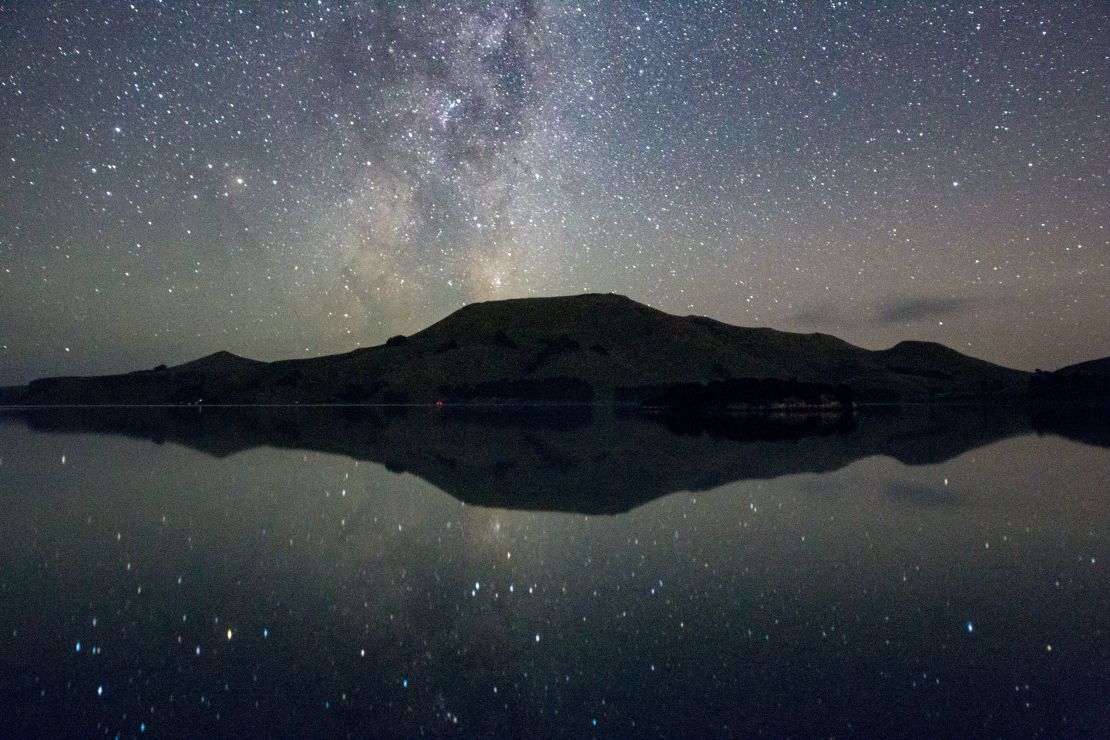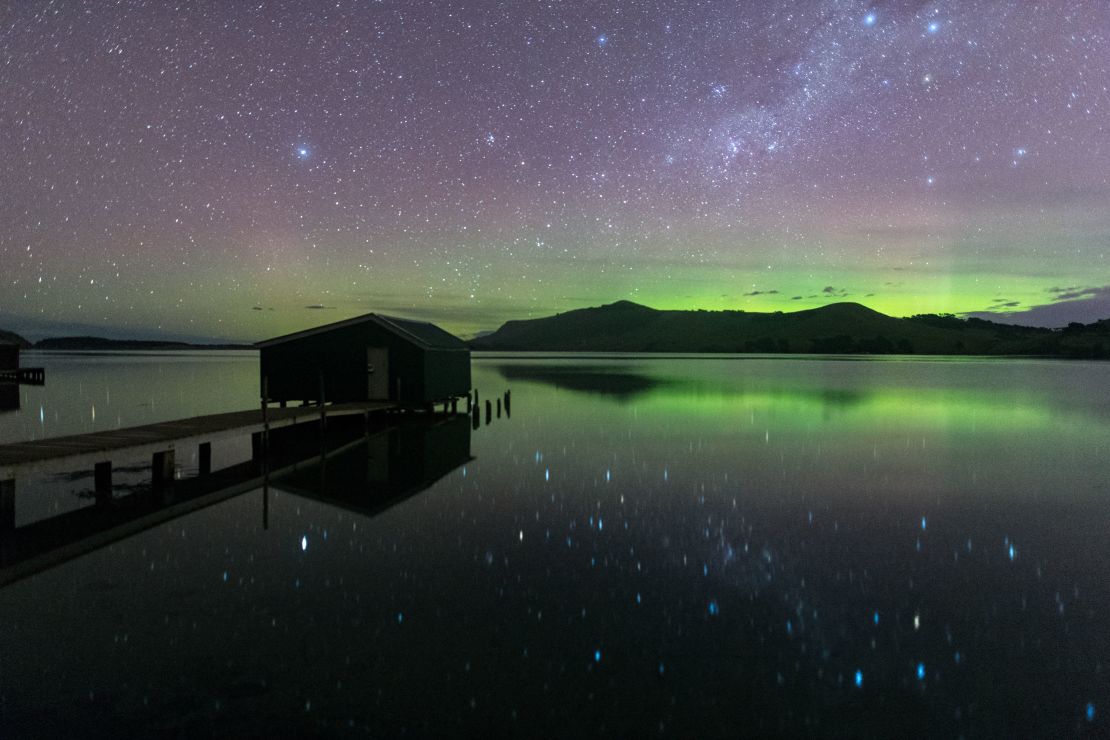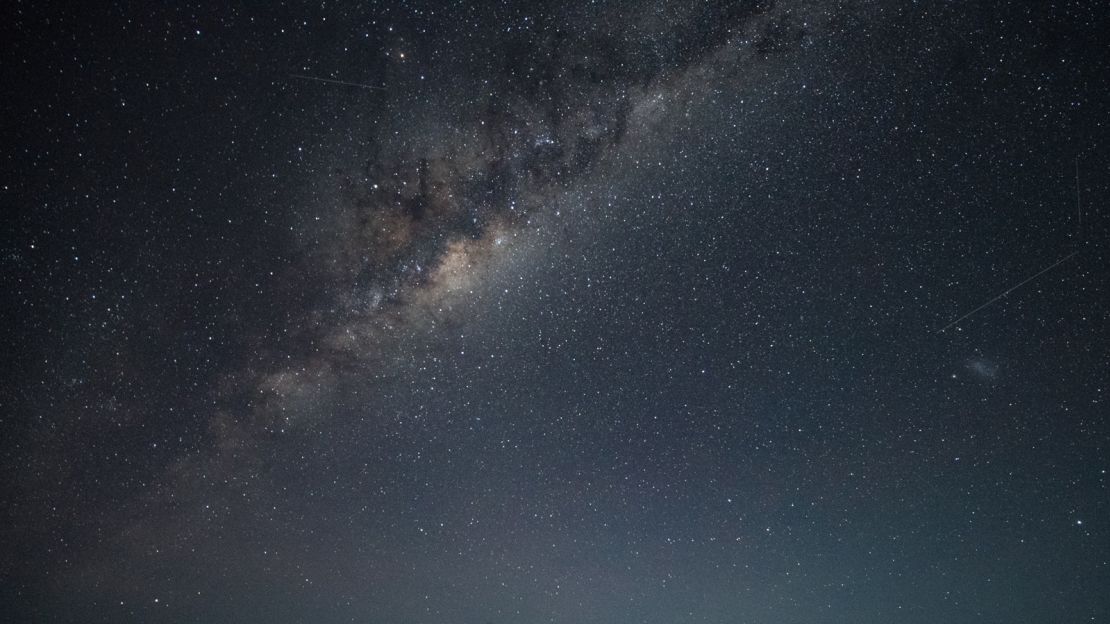Many people go their whole lives without seeing a shooting star overhead. In New Zealand, it’s a completely different story.
Away from the main cities, the county’s velvety black skies are a milky swirl of celestial galaxies. As the Earth slowly turns each night, a blanket of stars creeps across the inky depths.
And then there’s the ethereal glow of the Aurora Australis, the southern hemisphere’s equivalent of the Aurora Borealis.
“New Zealand is a brilliant place for stargazing, because you actually see the aurora quite a lot in this part of the world,” Dr. Ian Griffin, an award-winning British astronomer and director of the Otago Museum, tells CNN Travel. “Over the past five years, I have seen it at least 200 times.
“Our remote location and the fact that there are only 4 million people living in an area the size of the United Kingdom mean that it is very easy to get away from bright city lights and find a dark location from where you can enjoy lovely views of the night sky.”
Here,Griffin shares his favorite places to observe the Milky Way and Southern Lights, which are most prominent from March to September:
Lake Tekapo

Home to the world’s largest dark-sky reserve – the Aoraki Mackenzie International Dark Sky Reserve – mountain-ringed Lake Tekapo has become synonymous with star-gazing.
“The region around Aoraki (Mount Cook) was the first night sky reserve in New Zealand, and Lake Tekapo is rapidly becoming the jumping off point for astro-tourism in New Zealand,” says Griffin.
“The Earth and Sky center at Mt. John Observatory offers visitors access to very powerful telescopes with which you can get great views of the night sky against a brilliant southern Alpine backdrop.”
There are several tours in this rural region, including the two-hour Tekapo Star Gazing experience, where travelers will soak up a view of more than 50 million stars from the comfort of a steamy hot pool in Tekapo Springs.
The best time to go stargazing tends to be during New Zealand’s winter – from March to September – when the Milky Way is prominent and the Aurora Australis (Southern Lights) appear in surreal bursts of color, usually low in the sky.
“Our southern location means that we have the best bits of the sky,” says Griffin. “The center of the Milky Way galaxy passes overhead during our winter months, so you’ll see gorgeous star clouds of Scorpius and Sagittarius when they’re high in the sky.
“We also have glorious views of the Magellanic Clouds (satellite galaxies of the Milky Way), which can be seen in the southern sky pretty much all year round. They’re like fuzzy patches of light with hundreds of thousands of stars in them – that’s definitely something you don’t get to see in the northern hemisphere.”
Stewart Island

Located off the southernmost coast, this natural wonderland can be reached by ferry or plane.
Roughly 85% of the island is covered by Rakiura National Park, so there’s lots to do during the day – travelers can hike, kayak, fish or dive.
The evening promises clear night skies, particularly if visited during winter months.
“The southernmost of New Zealand’s islands is an astounding place for viewing the aurora,” says Griffin. “On a good auroral night, you can get lovely views from a lookout near the center of Oban, the main town.”
Though the southern lights are highly visible from this island, Griffin says the experience differs from that of the northern lights, which many people are more familiar with.
“Compared to the Northern Hemisphere aurora viewing locations – where the aurora often passes overhead – here in New Zealand, the aurora is often relatively low in the southern sky,” he explains.
“This means that it is possible to get lovely images of the aurora over mountains or capture its reflection on lakes and rivers, which are common in this part of the world.”
The Otago Peninsula

Extending from the southeast corner of the South Island, the Otago Peninsula is a haven for flora and fauna.
“Near Dunedin, but off the main beaten path of New Zealand tourism, the Otago Peninsula is an amazing area of natural beauty,” says Griffin.
“During the day you can gawp at the incredible wildlife, which includes two varieties of penguin and an albatross colony.”
And come nightfall? The peninsula transforms into a stargazer’s paradise.
“In my experience, there is nothing quite like observing the aurora on a dark moonless night from one of the coastal locations of the Otago Peninsula,” he adds.
“Sitting on a deck chair, watching the amazing motions of the aurora, as the sound of southern ocean waves crashing onto distant beaches accompanies the show is truly awe inspiring.
“Couple that with occasional interruptions from friendly sea lions, stargazing from this part of the world can be like nothing you’ve ever done before.”
The Catlins

Farther south down the coastline, between Dunedin and Invercargill, the Catlins region is known for its thundering waterfalls, dense forests and rugged coastlines.
But after the long summer days, dark winter nights provide an idyllic setting for galactic views.
“I think many people who visit New Zealand aren’t expecting to be blown away by the beauty of the night sky, but views in the Catlins are stunning,” says Griffin.
“One of the other things I like to mention is that in our summer, New Zealand is one of the few places on earth where you can see an aurora on a balmy warm night.
“I have watched an aurora wearing shorts and sandals, something that only the most hardy Northern Hemisphere observer can do.”
Chatham Islands

It doesn’t get much more remote than New Zealand’s Chatham Islands, where the population is around 600.
Floating off the eastern coastline, the archipelago is synonymous with glorious nature reserves.
“Very much off the main tourist path, the remote location of the Chathams make for incredible dark skies,” says Griffin.
“On a clear night, the view of the night sky from the road around the Te Whanga Lagoon is simply world-class.”
Before making the trip, you may want to practice your nighttime photography skills – lest you go home without any high-quality star imagery.
“The cameras on the latest generation of phones are getting better and better, but if you want to get decent pictures of an aurora or the night sky, it’s probably best to bring a decent digital camera and a tripod to hold it steady,” says Griffin.
“I’d suggest a camera with a shutter that can be kept open for at least 30 seconds.”
Naseby, Central Otago
Heading inland, about 93 miles northwest from Dunedin, Naseby is another accessible spot for stargazing.
“The town is seeking to become certified as a dark sky reserve, which means if you visit you won’t be troubled by bright streetlights,” says Griffin.
In addition to clear skies, the old-fashioned town also lures adventurous types to its Victorian century architecture – remnants of its days as a gold rush town in the 1800s.
Inviting campgrounds, hiking trails, natural swimming holes and winter sports such as ice luge and curling can also be found around the mountainous area.
From a Boeing 787 Dreamliner
For the very best southern lights views, Griffin suggests ditching land-locked tours all together and heading to the source onboard the Flight of the Lights – an experience organized each year by Otago Museum.
“Every year, a group of passionate aurora chasers organize a flight to the Earth’s southern auroral oval from either Dunedin or Christchurch,” explains Griffin.
“Over the past two years, passengers on the flight (all of whom get a window seat) have voyaged thousands of kilometers south of New Zealand into the heart of the auroral zone, where they get up close and personal with the Aurora Australis from the comfort of an Air New Zealand Dreamliner. The massive windows provide perfect views of the aurora.”
The next flight departs from Christchurch on April 11, 2019.
Where to stay

Some accommodations are specifically tailored for stargazing, including the stunning glass-roofed SkyScape lodge in Mackenzie Country on the South Island.
Located about 7.5 miles from Twizel, on the south island, this remote retreat also includes an outdoor bath, optional meals and farm tours of the surrounding landscape.
Likewise, the ultra-immersive PurePods promise glass-walled domes in several remote locations on the South Island, including Kahutara, Manakau and Kaikoura.
In addition to the panoramic views, each lodge includes minimalist interiors, solar-powered design and zero Wi-Fi.
To ensure you get the darkest skies possible, it’s best to check the lunar phases before booking a trip.
“Always plan your visit to coincide with the time of the month called ‘dark of the moon,’” says Griffin. “This is generally the time between the moon’s last and first quarter phases.”
And for star-crossed travelers who love to plan ahead? There’s a major astronomical event on the horizon.
“On July 22, 2026, there’s going to be a total solar eclipse visible from southern New Zealand – the path passes over some of the most beautiful scenery in our part of the world!”









